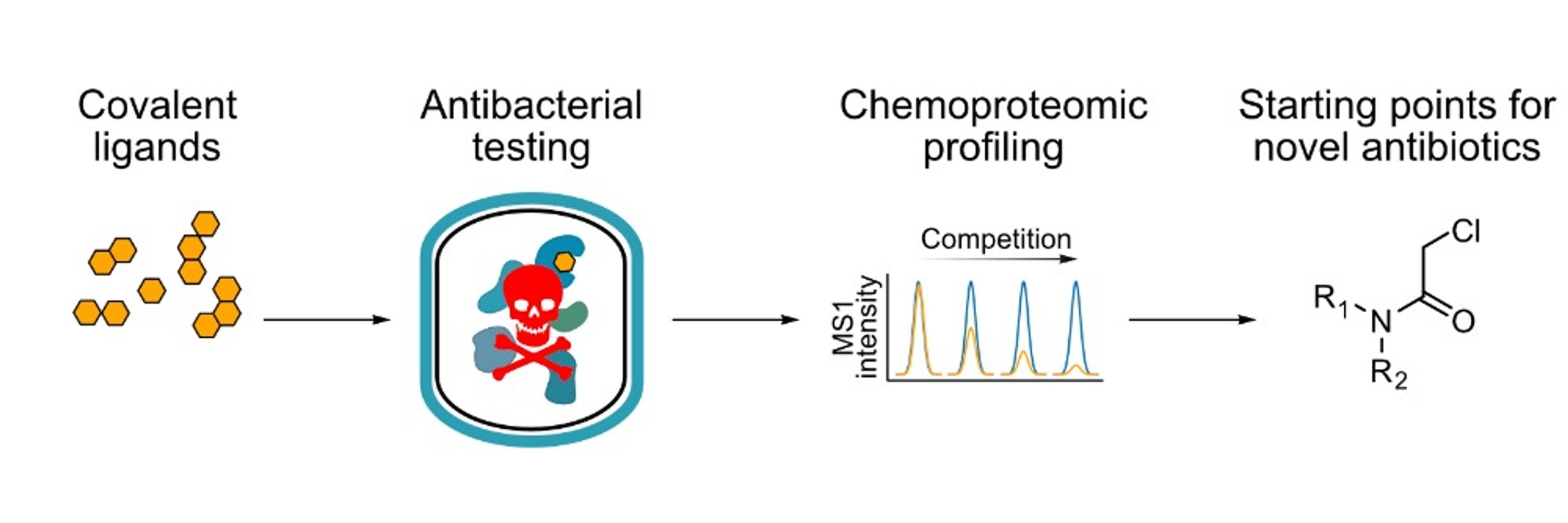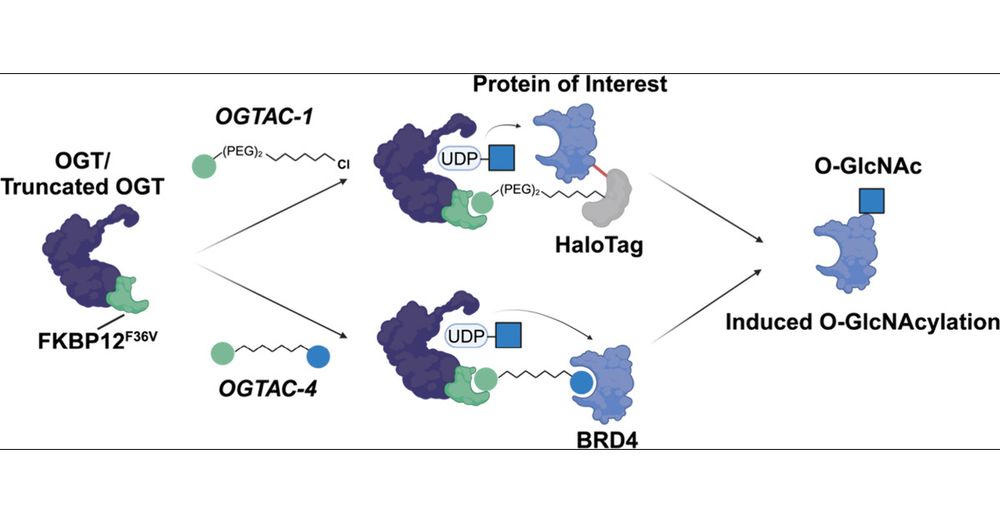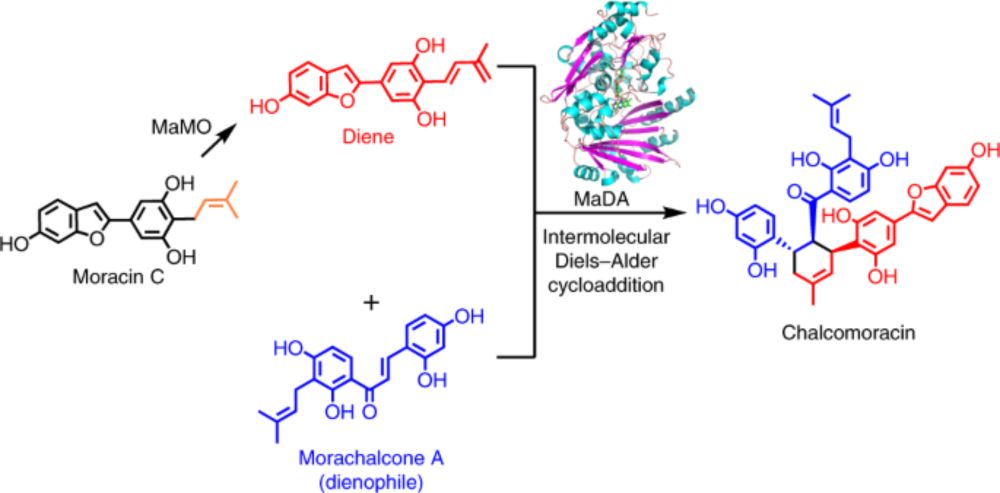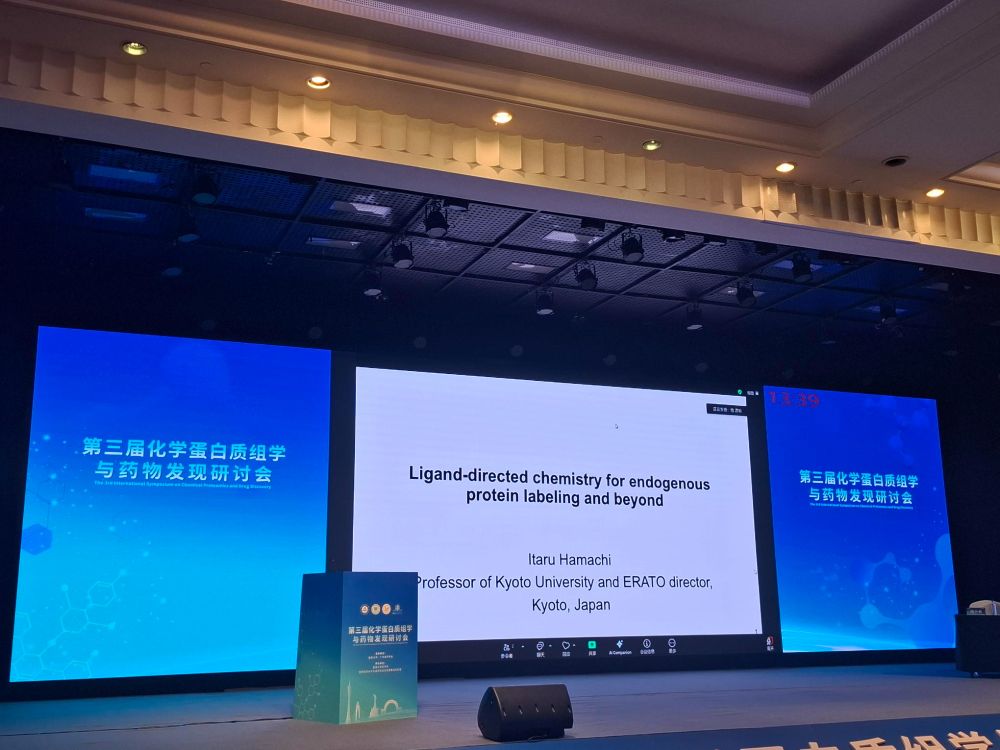
pubs.rsc.org/en/cont...
#ABPP #AfBPP #ChemSky #ChemBio #ProteoProbes #ChemPro
pubs.rsc.org/en/cont...
#ABPP #AfBPP #ChemSky #ChemBio #ProteoProbes #ChemPro
pubs.acs.org/doi/ful...
#ChemSky #ChemBio #Glycotime

pubs.acs.org/doi/ful...
#ChemSky #ChemBio #Glycotime

Exciting talk by Claudia Bonfio about the non-enzymatic formation of phospholipids under conditions that are plausible for early Earth.(1/2)
pubs.rsc.org/en/content/a...

Exciting talk by Claudia Bonfio about the non-enzymatic formation of phospholipids under conditions that are plausible for early Earth.(1/2)
pubs.rsc.org/en/content/a...
doi.org/10.1038/s415...
#ChemBio #ChemSky #ProximityLabeling

doi.org/10.1038/s415...
#ChemBio #ChemSky #ProximityLabeling
Thank you so much for inviting me, Kevin Neumann. (1/2)
#ChemSky #ChemBio #ChemPro #ProteoProbes

Thank you so much for inviting me, Kevin Neumann. (1/2)
#ChemSky #ChemBio #ChemPro #ProteoProbes

#ChemSky #ChemBio #DrugDiscovery


#ChemSky #ChemBio #DrugDiscovery
#ChemBio #ChemSky #ChemPro #ProteoProbes

#ChemBio #ChemSky #ChemPro #ProteoProbes
www.biorxiv.org/content/10.1...
www.biorxiv.org/content/10.1...
#Chromatography #LCMS

#Chromatography #LCMS
www.nature.com/articles/s41...
#ChemSky #ChemBio #DrugDiscovery

www.nature.com/articles/s41...
#ChemSky #ChemBio #DrugDiscovery
www.nature.com/articles/s41...
#ChemSky #ChemBio #ChemicalProteomics #ChemPro #ProteoProbes

www.nature.com/articles/s41...
#ChemSky #ChemBio #ChemicalProteomics #ChemPro #ProteoProbes
www.nature.com/articles/s41...
#MS #MassSpectrometry #DeNovoSequencing

www.nature.com/articles/s41...
#MS #MassSpectrometry #DeNovoSequencing
#HTS #Screening #ChemSky #DrugDiscovery

#HTS #Screening #ChemSky #DrugDiscovery
If you want to check it out, you can find it here: www.nature.com/articles/s41...
#ChemSky #ChemBio #ChemicalProteomics #Chemoproteomics #ProteoProbes #ChemPro

We have developed a new strategy termed "potency coherence analysis" that leverages the drug potency dimension in decryptM to decode the kinases that shape the human phosphoproteome.
Read more:

We have developed a new strategy termed "potency coherence analysis" that leverages the drug potency dimension in decryptM to decode the kinases that shape the human phosphoproteome.
Read more:
#ChemSky #ChemBio
#ChemSky #ChemBio
onlinelibrary.wiley.com/doi/10.1002/...
#Antibiotics #ChemSky
onlinelibrary.wiley.com/doi/10.1002/...
#Antibiotics #ChemSky
If you want to check it out, you can find it here: www.nature.com/articles/s41...
#ChemSky #ChemBio #ChemicalProteomics #Chemoproteomics #ProteoProbes #ChemPro

If you want to check it out, you can find it here: www.nature.com/articles/s41...
#ChemSky #ChemBio #ChemicalProteomics #Chemoproteomics #ProteoProbes #ChemPro
onlinelibrary.wiley.com/doi/10.1002/...
#ChemSky #ChemBio

onlinelibrary.wiley.com/doi/10.1002/...
#ChemSky #ChemBio
doi.org/10.1021/jacs...
#ChemSky #ChemBio #ChemicalProteomics #DrugDiscovery

doi.org/10.1021/jacs...
#ChemSky #ChemBio #ChemicalProteomics #DrugDiscovery
www.nature.com/articles/s41...
#ChemSky #ChemBio #ChemPro #ProteoProbes

www.nature.com/articles/s41...
#ChemSky #ChemBio #ChemPro #ProteoProbes
www.pnas.org/doi/10.1073/...
#ChemSky #ChemBio

www.pnas.org/doi/10.1073/...
#ChemSky #ChemBio
pubs.acs.org/doi/full/10....
#TPD #ChemSky #ChemBio #ChemicalProteomics

pubs.acs.org/doi/full/10....
#TPD #ChemSky #ChemBio #ChemicalProteomics

